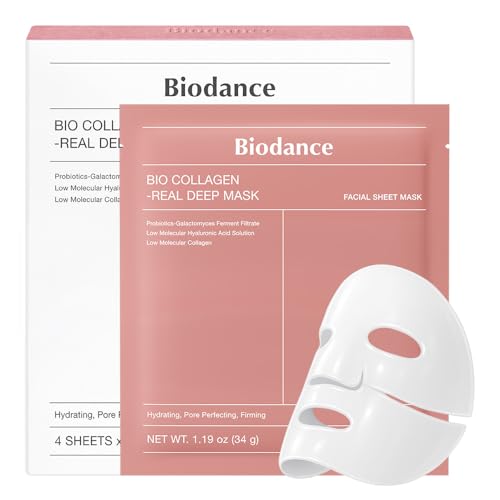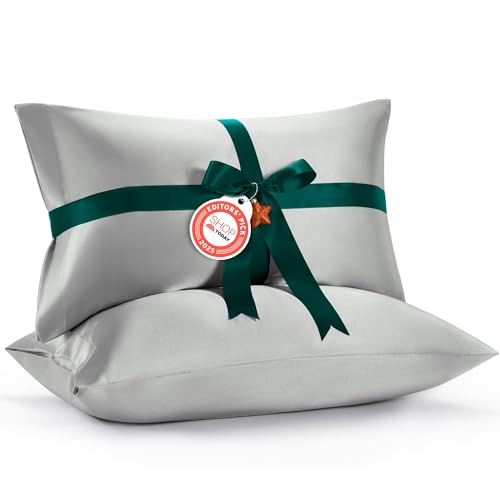When it comes to enhancing the beauty and durability of your outdoor space, choosing the right filler for your pavers is crucial. Whether you’re planning a new patio, walkway, or driveway, selecting the best material can make a significant difference in the longevity and aesthetics of your project. With so many options available, it’s essential to understand the characteristics of each filler to make an informed decision.

In our exploration of the best filler for pavers, we’ll delve into various materials commonly used, their pros and cons, and factors to consider when making your selection. From traditional choices like sand to modern solutions such as polymeric sand, each option offers unique benefits for different applications. By the end of this article, you’ll have a clearer understanding of which filler aligns best with your project goals and budget.
Understanding Paver Fillers
The Role of Filler in Paver Installation
When considering the best filler for pavers in our landscape designs, we must understand the critical role it plays in the installation process. Fillers serve as the material that goes in between the pavers, locking them in place and providing stability. They help prevent weed growth, water seepage, and shifting of the pavers, ensuring a long-lasting and aesthetically pleasing outdoor space.
Types of Paver Fillers
In our landscape projects, we encounter various types of paver fillers, each with its unique characteristics and benefits. From traditional options like sand to more advanced choices such as polymeric sand, the selection of the filler depends on factors like the paver material, location, and desired outcome.
- Traditional Sand: This classic filler is versatile and easy to work with, making it a popular choice. It allows for proper drainage and provides a natural look, ideal for rustic or traditional design themes.
- Polymeric Sand: For projects where we seek enhanced durability and stability, polymeric sand is our go-to option. Its advanced formula hardens when activated with water, creating a strong bond between pavers and minimizing weed growth.
- Gravel: In some cases, we opt for gravel as a filler, especially for permeable paver installations. Gravel allows water to pass through, reducing runoff and supporting eco-friendly design practices.
- Epoxy Resin: When we need a high-strength filler for heavy-traffic areas or industrial settings, epoxy resin offers outstanding durability and resistance to harsh weather conditions.
By understanding the characteristics and advantages of each type of paver filler, we can make informed decisions to ensure the longevity and visual appeal of our landscape designs.
Evaluating Paver Filler Options
Sand as Paver Filler
As landscape designers, we often recommend sand as a versatile filler for pavers due to its ability to provide a stable base while allowing for sufficient drainage. Sand offers excellent flexibility, making it ideal for different paver types and designs. Its fine texture allows for easy filling of joints, promoting a seamless and aesthetically pleasing finish.
Consider using coarse sand for larger joints and finer sand for tighter spaces between pavers. This helps in preventing weed growth and enhances the overall stability of the paved surface. Sand also allows for some degree of movement, accommodating slight shifts and settling over time without impacting the integrity of the installation.
When evaluating paver filler options, sand stands out as a cost-effective and reliable choice that contributes to the longevity and visual appeal of outdoor spaces. Its traditional nature makes it a preferred option for various landscape projects, ensuring both durability and aesthetic charm.
Other Filler Materials
Crushed Stone
When considering filler materials for pavers, crushed stone stands out as a robust option in our landscape designs. We often recommend crushed stone for its durability and ability to provide excellent drainage for outdoor spaces. Its angular edges interlock well, creating a stable base for pavers that can withstand varied weather conditions.
Using crushed stone as a filler not only enhances the structural integrity of the paver installation but also offers a visually appealing look. Its versatility allows us to utilize different sizes to accommodate various joint widths between pavers. Additionally, crushed stone’s natural texture adds a touch of elegance to outdoor pathways, patios, or driveways.
Rubber Fillers
In our landscape projects, we also explore the use of rubber fillers as an alternative choice for paver installations. Rubber fillers are environmentally friendly and offer excellent flexibility, making them suitable for areas prone to temperature fluctuations. The shock-absorbing properties of rubber fillers can reduce impact and noise, creating a more comfortable and safer outdoor space.
One of the notable advantages of rubber fillers is their resistance to weed growth, which helps in maintaining the aesthetics of the paved area. Their ease of installation and low maintenance requirements make rubber fillers a convenient option for enhancing the longevity of paver projects. We often consider rubber fillers for playgrounds, walkways, and other high-traffic areas to provide a durable and eco-friendly filler solution.
Factors Determining the Best Filler
As landscape designers, we understand the importance of selecting the best filler for pavers to ensure not only aesthetic appeal but also durability in outdoor spaces. Considering factors such as climate and weather resistance, durability and maintenance, as well as cost-effectiveness, is crucial in making the right choice.
Climate and Weather Resistance
When choosing a filler for pavers, we must consider the climate and weather conditions of the area. Opting for a filler that can withstand extreme temperatures, heavy rainfall, or freeze-thaw cycles is essential to maintain the integrity of the paved surface. For instance, polymeric sand is known for its excellent water resistance, preventing erosion between pavers and enhancing overall stability, making it an ideal choice for regions with high rainfall or humidity.
Durability and Maintenance
Durability plays a significant role in the longevity of pavers, making it a key factor in selecting the filler. Materials like crushed stone offer exceptional durability, standing the test of time and maintaining their structure even under heavy traffic or harsh weather conditions. Additionally, easy maintenance is essential to ensure that the paved area remains pristine without extensive upkeep. Fillers that require minimal reapplication or adjustments, such as rubber fillers that offer long-lasting performance and require little maintenance, are preferred for hassle-free outdoor spaces.
Cost-Effectiveness
Cost-effectiveness is a practical consideration when determining the best filler for pavers. While initial costs may vary depending on the filler material, it’s essential to consider long-term savings and benefits. Materials like sand may be more budget-friendly upfront, but options like polymeric sand, with its extended lifespan and reduced need for reapplication, can prove cost-effective in the long run. Balancing the initial investment with ongoing maintenance and replacement costs is key to choosing a filler that offers value for money and ensures the longevity of the paved area.
By considering these factors – climate and weather resistance, durability and maintenance, and cost-effectiveness – we can make informed decisions as landscape designers when selecting the best filler for pavers to create attractive, long-lasting outdoor spaces.
Application Tips for Paver Fillers
Proper Installation Techniques
When it comes to paver fillers, the proper installation techniques are crucial to ensure a long-lasting and visually appealing outdoor space. Firstly, before filling the pavers, it’s essential to prepare the base adequately. We always make sure the base is compacted, leveled, and free of debris to prevent any future issues with settling or unevenness.
Next, choosing the right type of filler is key. We opt for fillers like polymeric sand for its superior bonding properties or crushed stone for its natural look and durability, depending on the project requirements. It’s vital to follow the manufacturer’s guidelines and recommendations for installation to achieve the best results. We pay attention to details such as joint width and depth to ensure proper filler application.
« The Ultimate Guide to Choosing the Perfect Paver Sand – Boost Your Hardscaping Game Now Florida Paver Sealing Secrets Revealed: How Often You Really Need to Protect Your Investment »
Furthermore, proper compaction of the filler is essential for stability. We use vibrating plate compactors to evenly distribute the filler and ensure a tight fit between the pavers. This step helps prevent shifting or weed growth between the joints, maintaining the integrity of the paved area over time.
Long-Term Care and Maintenance
Ensuring the longevity of paver fillers requires adequate care and maintenance strategies. We recommend regular inspections to identify any signs of wear, damage, or weed growth between the joints. Addressing these issues promptly can prevent further damage and prolong the lifespan of the fillers.
Regular cleaning is also essential to keep paver fillers looking their best. We use a gentle detergent and water to remove dirt, grime, and stains without compromising the integrity of the fillers. Additionally, we suggest applying a sealer to protect the fillers from water penetration, UV rays, and stains, enhancing their durability and appearance.
By following proper installation techniques and implementing a proactive care and maintenance routine, we can ensure that paver fillers not only enhance the aesthetic appeal of outdoor spaces but also stand the test of time, providing lasting beauty and functionality.
Recommendations for the Best Paver Filler
Top Picks for Residential Use
When it comes to recommending the best paver fillers for residential projects, our go-to choices are polymeric sand and crushed stone. Polymeric sand is a popular option since it hardens when activated with water, creating a firm bond that minimizes weed growth and resists erosion. It’s perfect for filling joints between pavers, especially in areas with high foot traffic. Additionally, crushed stone, available in various sizes, offers excellent drainage and stability, ideal for enhancing the longevity of your paved surfaces. Utilizing these fillers ensures a visually appealing and durable outdoor space for homeowners to enjoy.
Preferred Options for Commercial Spaces
In commercial settings, where durability and low maintenance are crucial, we recommend rubber fillers and polymeric sand as the preferred options for filling pavers. Rubber fillers, made from recycled materials, provide flexibility and shock absorption, making them suitable for heavy traffic areas like walkways and parking lots. They are also resistant to harsh weather conditions, ensuring long-lasting performance. Similarly, polymeric sand stands out in commercial spaces by offering superior joint stabilization, preventing weed growth, and keeping the pavers securely in place. These choices guarantee a resilient and professional-looking paved environment for businesses and public spaces.
Conclusion
Choosing the right filler for your pavers is crucial for both aesthetics and longevity. Factors like climate resistance, durability, and maintenance play a key role in making the best selection. For residential projects, polymeric sand and crushed stone stand out as top choices, offering a blend of durability and visual appeal. In commercial settings, rubber fillers and polymeric sand are preferred for their resilience and low maintenance needs. These fillers not only stabilize joints and prevent weed growth but also ensure enduring performance, creating visually stunning paved areas for various projects. Make the right choice for your pavers to enjoy beautiful and long-lasting outdoor spaces.












